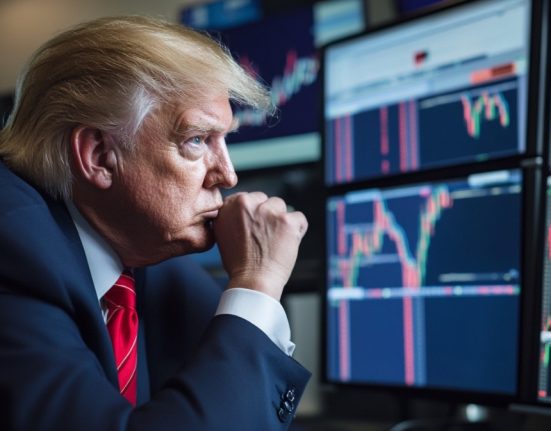Finland’s short-term economic outlook depends heavily on how long US President Donald Trump’s tariffs on the EU remain in force, the ministry says.

The Finnish economy will see modest growth this year, according to a forecast published on Wednesday by the Finance Ministry, but the threat of a prolonged global trade war casts a significant shadow over Finland’s economic short-term future.
The ministry predicts that Finland’s gross domestic product (GDP) will grow by 1.3 percent over the course of 2025, but added a large caveat to its report that any potential growth depends heavily on the assumption that US President Donald Trump‘s tariffs on the EU remain in force for a short period of time.
However, if the US administration keeps its tariffs in place, this will have a detrimental knock on effect on the Finnish economy, with weaker growth in 2025 and 2026, as well as a further increase in Finland’s level of state debt.
In its forecast, the ministry noted that the risks and uncertainty caused by Trump’s trade policies have risen to exceptionally high levels.
Finland’s government finances are already in a relatively weak state, the ministry added, and the Finnish economy has very little buffer to protect it from a prolonged trade war.
Although the forecast was published on Wednesday, it does not include the impact of the government’s stimulus measures, announced last week, which included a package of tax changes and spending cuts.
Uncertainty looms
At a press conference announcing the figures, the ministry’s director general, Mikko Spolander, told reporters that the forecast contains two different scenarios, depending on how long the US tariffs remain in place.
The first, and more optimistic, scenario suggests that Finland’s GDP will grow by 1.3 percent this year, 1.6 percent next year and by 1.5 percent in 2027. These numbers are based on the assumption that the tariffs will be lifted soon.
If they are not, the fallout will hurt global economic growth and Finnish exports, as well as the growth predictions.
The ministry’s outlook is more optimistic than recent estimates given by the Bank of Finland, which predicted growth of 0.8 percent this year, and by the OP Financial Group, which forecast 1.0 percent.
Inflation slowing, employment to improve
The ministry’s report also noted that inflation has slowed down significantly in recent months, and it predicts that trend to continue throughout the rest of this year and into 2026.
However, although this slowdown has had a positive impact on the spending power of Finnish households, the ministry added that its effects will be mitigated by Finland’s rising rate of unemployment as well as by the government’s cuts to social security benefits.
While unemployment is expected to hover around the 9 percent mark throughout this year, the ministry said the situation is likely to improve next year, with the employment rate forecast to rise to 77.3 percent.
The ministry’s financial advisor, Janne Huovari, told the Wednesday morning press conference that the slowdown in Finland’s inflation rate can be considered a positive in the context of the impending trade war.
“This means that the real purchasing power of households has started to grow as a result of wage increases, and it will increase further during the forecast period,” Huovari explained.
State debt will remain high
While there were some optimistic notes in the ministry’s forecast, it also emphasised that Finland’s public finances are in a poor state.
The Bank of Finland reported earlier this year that the country’s general government debt-to-GDP ratio for last year was above 80 percent, and this situation is not expected to improve very significantly over the next few years, according to the ministry’s forecast.
This would especially be the case if the trade war continues for a longer period of time, Huovari said.
In addition, the ministry’s report noted that additional expenditure on defence — in line with Finland’s responsibilities as a member of Nato — will further increase state debt unless it is financed by tax increases or cuts to public services.
Users with an Yle ID can leave comments on our news stories. You can create your Yle ID via this link. Our guidelines on commenting and moderation are explained here.







